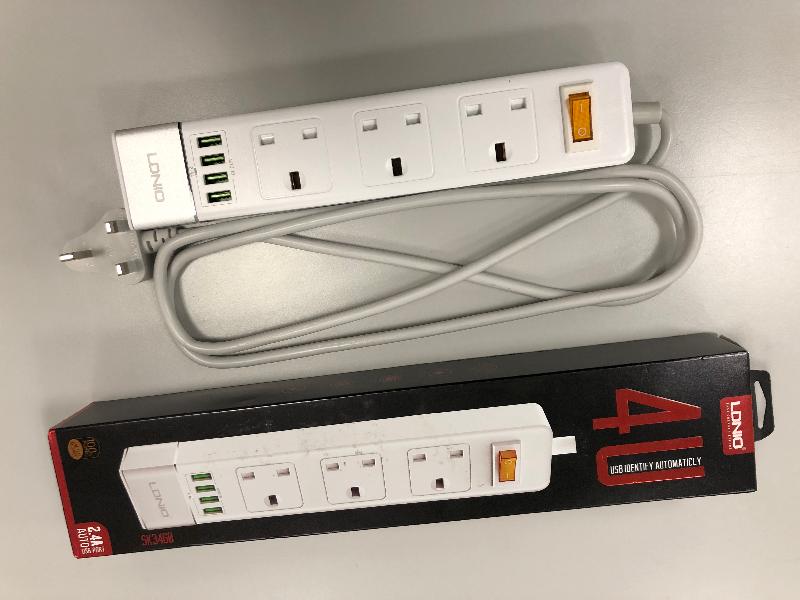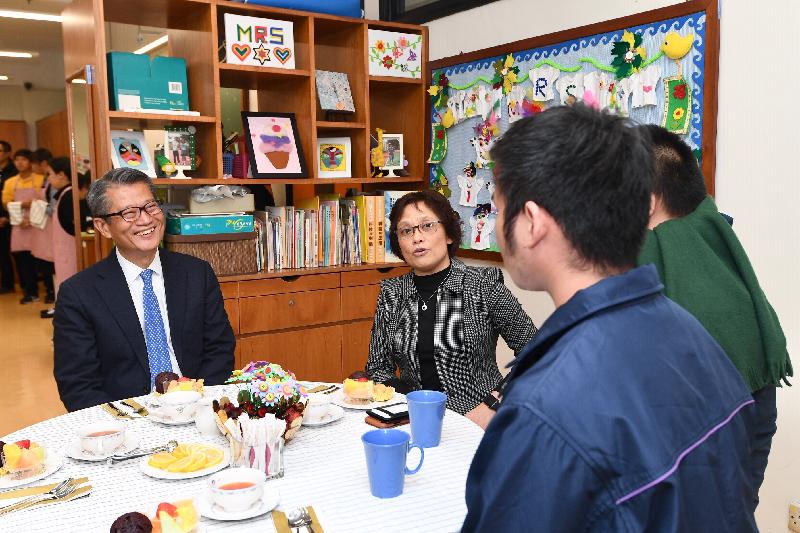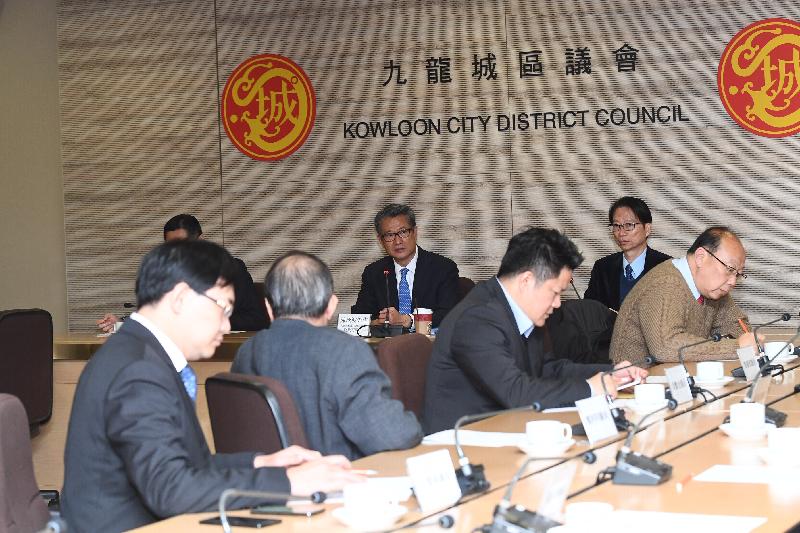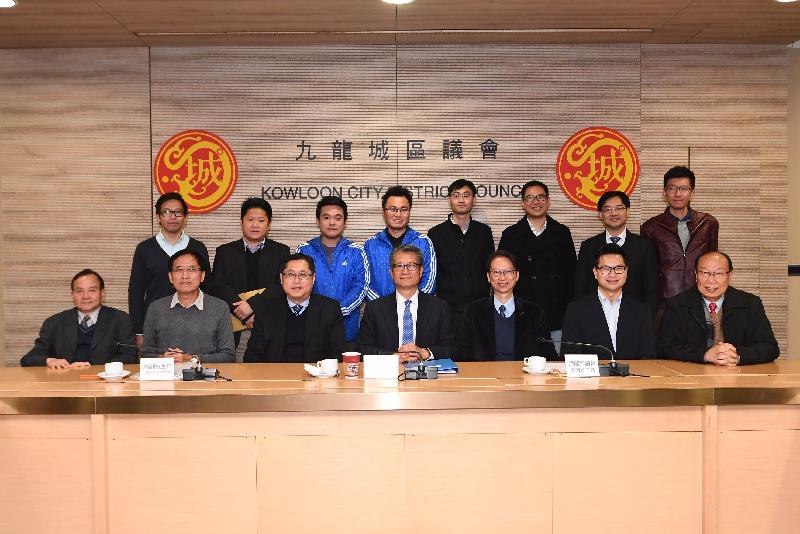Following is a question by the Hon Jeremy Tam and a written reply by the Secretary for the Environment, Mr Wong Kam-sing, in the Legislative Council today (December 12):
Question:
In 2010, the then Chief Executive indicated in his Policy Address that "[t]he ultimate policy objective of the Government is to have zero emission buses running across the territory." Nevertheless, as at early this year, among the 36 single-deck electric buses purchased by franchised bus companies (bus companies) with full subsidies by the Government, only 24 buses had been put into service. It has been reported that bus companies face quite a number of difficulties should they switch to use electric buses for the whole bus fleets, including that thousands of bus parking spaces have not been installed with electric bus charging facilities, the power supply facilities at parking spaces and in bus depots do not have the capacity to meet the power demand for simultaneous charging of a large number of electric buses, and there are a host of technical issues. In this connection, will the Government inform this Council:
(1) whether it knows in respect of each bus company, the respective current numbers of bus parking spaces located at (i) bus termini, (ii) bus depots and (iii) other places, and among them, the numbers of those provided with charging facilities as well as their detailed locations (set out in a table by name of bus company and location of the parking space);
(2) whether it knows the following details of each of the electric buses already put in service: (i) the bus model, (ii) the manufacturer and place of origin, (iii) the route number and the first and last stops of the bus route plied by the bus, (iv) the number of breakdowns in the past year, (v) the location of and site area occupied by its charging facilities, and (vi) the amperage for charging (set out by name of bus company in a table);
(3) whether it knows the time needed for fully charging the supercapacitor buses already put in service and their power storage capacities, as well as their maximum travel distance; the maximum number of supercapacitor buses that can be simultaneously charged under the existing power supply facility of each bus depot;
(4) of the performance indicators for those electric buses which are plying (i) routes with more uphill roads and (ii) routes with more level roads (set out in the table below);
| Performance Indicator |
(i) |
(ii) |
| (a) Maximum travel distance (km) |
|
|
| (b) Fuel economy (km/kWh) |
|
|
| (c) Effectiveness in reducing emission of various air pollutants |
|
|
| (d) Fuel cost (dollar/km) |
|
|
| (e) Number of breakdowns each year |
|
|
| (f) Downtime due to repairs and maintenance (day/year) |
|
|
| (g) Maintenance cost (dollar/km) |
|
|
| (h) Total operating cost (dollar/km) |
|
|
(5) whether it has assessed if it is technically feasible to have more bus routes switched to be plied by electric buses; if it has assessed and the outcome is in the affirmative, of the route numbers and details of such routes, and whether there are plans and timetables for switching to plying such routes by electric buses;
(6) whether, in the coming three years, it will provide assistance to bus companies for installing more electric bus charging facilities and upgrading such facilities; and
(7) whether it has reviewed the progress in achieving the objective of "hav[ing] zero emission buses running across the territory" and the effectiveness of the relevant measures; if so, of the outcome; if not, whether it will conduct a review expeditiously?
Reply:
President,
Electric buses do not have exhaust emissions. Successful replacement of conventional diesel franchised buses with electric buses in Hong Kong can significantly improve our roadside air quality. In this connection, the Government provided $180 million to fully subsidise five franchised bus companies, including Kowloon Motor Bus Company (1933) Limited (KMB), Long Win Bus Company Limited (LWB), Citybus Limited (CTB), New World First Bus Services Limited (NWFB) and New Lantao Bus Company (1973) Limited (NLB), to acquire 36 single-deck electric buses (including 28 battery-electric buses and eight supercapacitor buses) for conducting a two-year trial to test out their operational performance, reliability as well as economic feasibility in local conditions.
At present, 26 battery-electric buses and four supercapacitor buses have commenced operation. The remaining two battery-electric buses of NLB are under re-tendering process (Note 1), and are expected to commence operation by the end of 2019 at the earliest. Besides, the four KMB's supercapacitor buses are expected to commence operation in the first and second quarters of 2019 respectively.
Our reply to the question raised by the Hon Jeremy Tam is as follows:
(1) and (2) The current number of bus parking spaces located at bus termini and bus depots in various districts are as follows:
| |
Number of bus parking spaces located at bus termini |
Number of bus parking spaces located at bus depots (including the parking area for the use of franchised buses only) |
| Hong Kong Island |
About 510 |
About 660 |
| Kowloon |
About 330 |
About 1 080 |
| New Territories |
About 770 |
About 2 000 |
| Sub-total |
About 1 610 |
About 3 740 |
| Total |
About 5 350 |
As regards the electric buses which have commenced or completed the trials, the following information is set out in Annex 1: (i) number, model, manufacturer and origin of buses; (ii) service route (the origins and destinations); (iii) day of commencement of trial; (iv) location of charging facilities; (v) number of charging facilities and its site area; (vi) information of electricity storage device and charging requirement; and (vii) monthly average number of on-road breakdowns and bus availability (per cent).
(3) The four supercapacitor buses in operation are belonged to KMB and the trial has not yet completed (Note 2). According to the preliminary trial results, supercapacitor buses can be fully charged in about 20 minutes and travel about 20 to 30 kilometres (km) after a full charge. Therefore, supercapacitor buses are more suitable for short routes and franchised bus companies are required to provide charging facilities at bus stops and/or termini so that supercapacitor buses can be timely charged. To facilitate the trial of supercapacitor buses on the circular route of 284, KMB installed two charging facilities at Sha Tin Central Bus Terminus and KMB Sha Tin Depot respectively to ensure that supercapacitor buses could provide smooth and reliable bus services. Each charging facility can provide charging for one supercapacitor bus at a time.
(4) In general, the electricity consumption of electric buses running on uphill roads is higher than that running on level roads. The trial routes mostly compose of uphill roads and level roads, and thus we are not able to evaluate separately their performance for uphill roads and level roads. Having said that, according to the completed trials' result of five BYD battery-electric buses, the energy consumption of trial route with more uphill roads (i.e. Route No. 81) is about 16 per cent more than the trial route with more level roads (i.e. Route No. 78). As regards the maintenance fee, the electric buses and charging facilities of the trial are still within the warranty period and the suppliers are responsible for the maintenance. As such, data about the maintenance fee and the overall operational fee are not available. A summary of the trial findings up to May 31, 2018 is at Annex 2.
(5), (6) and (7) Currently, there are about 6 000 franchised buses in Hong Kong. About 95 per cent of which are double-deckers and the remaining are single-deckers. The feasibility of promoting the implementation of electric bus services throughout or in individual areas of Hong Kong depends very much on the maturity of electric bus technologies, their prices and suitability for use in Hong Kong. We have to test and prove that the relevant technology is suitable for the local environment and the actual modus operandi of the public transport sector before introduction of electric buses on a large scale.
The technology of single-deck electric buses is already used in places outside Hong Kong, but the operation in Hong Kong is subject to further test to ascertain the suitability for use in Hong Kong. The technology of double-deck electric buses is still developing and there are very few models available in the international arena. Furthermore, their passenger carrying capacity and operational efficiency still fail to fulfil the local operational needs (including long daily service hours, high peak passenger loadings, the need to tackle hilly terrains as well as intense air-conditioning demand in hot and humid summer, etc.). We will keep in view the technological development of double-deck electric buses and trials in other places so as to introduce suitable models for trial in due course.
As regards the single-deck battery-electric buses, the two-year trial of the first batch of five BYD battery-electric buses was completed in May 2018. The overall average daily driving range of the five buses during the trial was about 190 km. However, under high ambient temperature demanding high loading of air-conditioning system, the driving range reduced to about 150 km, which could not meet the normal daily requirement of most of the single-deck bus routes of 200 to 300 km. It is our initial view that the wider use of single-deck battery-electric buses in Hong Kong will hinge on the following two factors:
(i) whether the battery capacity of single-deck battery-electric bus could be substantially increased later enabling it to travel about 300 km a day after a full charge; and/or
(ii) whether there is adequate space and power capacity for installation of charging facilities at the termini or public transport interchanges for top-up charging of the single-deck battery-electric buses in daytime taking into account mode of charging in daytime and high operation frequency of buses in Hong Kong.
As for single-deck supercapacitor buses, they can travel about 20 to 30 km only after a full charge and thus more suitable for short routes. Bus stops and/or bus termini would be required to provide charging facilities for timely re-charging of the supercapacitor buses. Whether the supercapacitor buses can be further promoted depends on the availability of suitable short routes of single-deck buses and public transport interchanges or bus termini, which the routes pass through, that can provide adequate space and power capacity for installation of top-up charging facilities.
The Government will continue to monitor the trial of electric franchised buses and work with the franchised bus companies to investigate the charging solutions to suit local operational needs. If the trial results are satisfactory, the Government will promote wider use of single-deck electric buses by the franchised bus companies, taking into account affordability of the companies and passengers. We will also keep in view the technological development of double-deck electric buses and consider at a suitable juncture to carry out trials with the franchised bus companies in Hong Kong.
Note 1: NLB completed the tendering for procurement of two battery-electric buses earlier. As the supplier has subsequently withdrawn their offer, NLB has to re-tender the contract.
Note 2: Two buses commenced the trial in March 2017 and and another two in November 2018.








